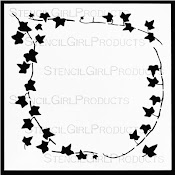StencilGirl Talk: Mary Beth Shaw's VLOG: March 2022
-
StencilGirl Talk: Mary Beth Shaw's VLOG: March 2022: Join Mary Beth in
Amsterdam and Paris! Click here for more information and registration!
Wednesday, November 29, 2017
Monday, November 27, 2017
Sunday, November 26, 2017
Saturday, November 25, 2017
Friday, November 24, 2017
Thursday, November 23, 2017
Wednesday, November 22, 2017
Monday, November 20, 2017
Friday, November 17, 2017
Tuesday, November 14, 2017
Saturday, November 11, 2017
Subscribe to:
Comments (Atom)




















































































